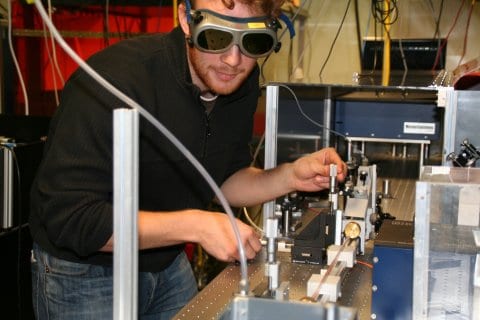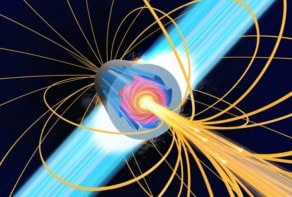Researchers in the UK have unveiled a new technique for characterizing the light within ultrashort infrared laser pulses. The method determines the phase of the light relative to the pulse envelope, and could improve scientists' ability to probe the electrons in atoms and molecules and lead to a better understanding of how chemical reactions occur (Nature Physics doi:10.1038/nphys463).

Laser pulses lasting tens of femtoseconds (10-15s) are used to manipulate the electrons involved in chemical reactions and have provided a wealth of knowledge of how these reactions occur. While shorter laser pulses should yield an even deeper understanding of chemical processes, problems arise when the duration of the pulse is so short that it only incorporates a few cycles of the light wave. Such pulses could begin with the light at maximum amplitude, minimum amplitude, or somewhere in between. The relative position of the waveform within the pulse envelope — called the carrier-envelope phase (CEP) – can have a significant effect on how the pulse interacts with electrons and therefore it must be controlled accurately.
In 2003 researchers in Austria and Germany developed a technique for locking the CEP of femtosecond laser pulses. However, making accurate measurements of the CEP had remained elusive, until now.
John Tisch and colleagues at Imperial College measured the CEP by firing an 8.5 femtosecond laser pulse into a gas, which responds by emitting an x-ray pulse that is up to 10 times shorter than the original laser pulse. The researchers found that they could reconstruct the waveform of the original femtosecond laser pulse from information contained within the x-ray pulse.
The researchers used an imaging spectrometer to collect spatial and spectral information on the x-ray pulse and this data was processed to determine the position of the waveform peak to a precision of 50 attoseconds (50 x 10-18s). A key feature of this new technique is that it determines the phase of individual pulses rather than the average of many pulses – making it a powerful tool for characterizing the output of femtosecond lasers.
Knowing the CEP with attoscale precision is important because this is the timescale associated with the motion of the electrons involved in chemical reactions. This could allow physicists to steer electrons with greater precision and control processes such as the emission of light and chemical reactions.


